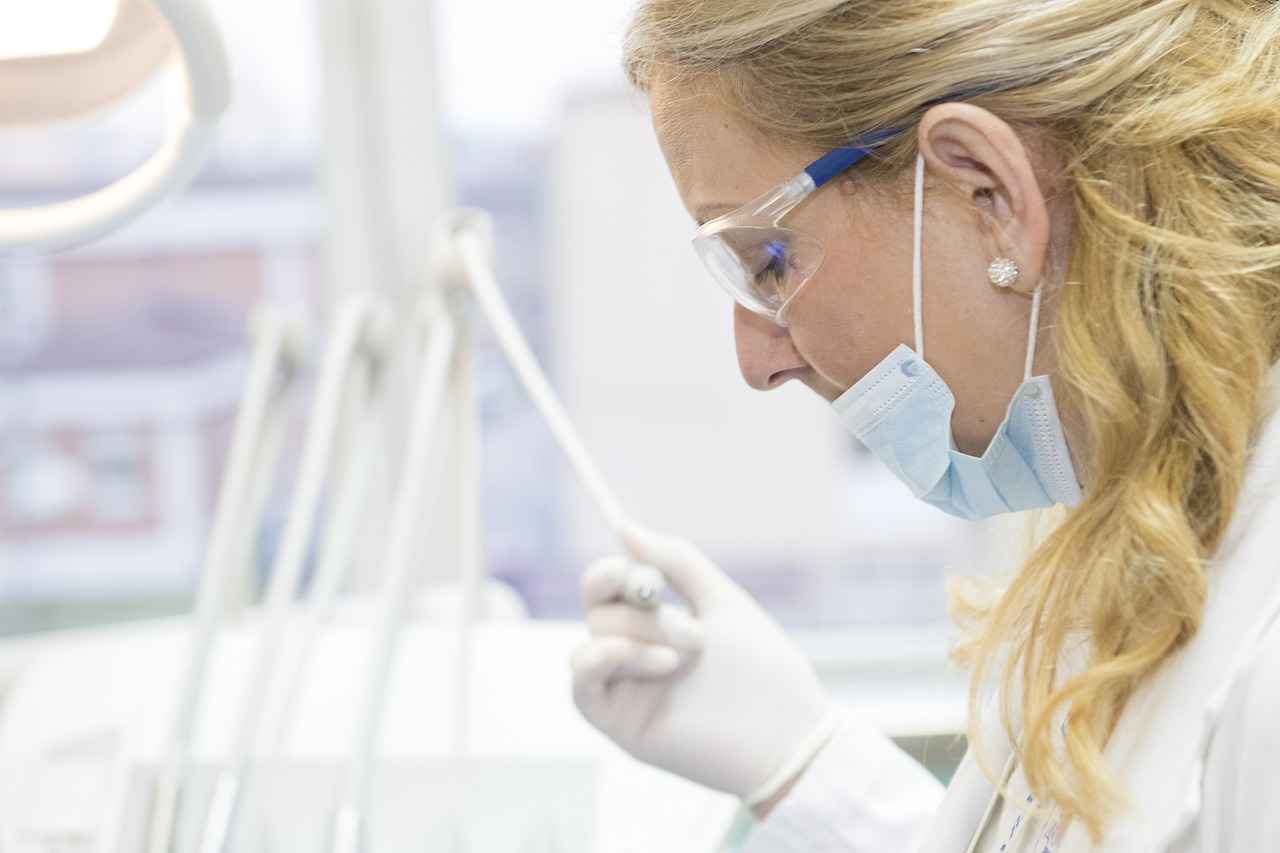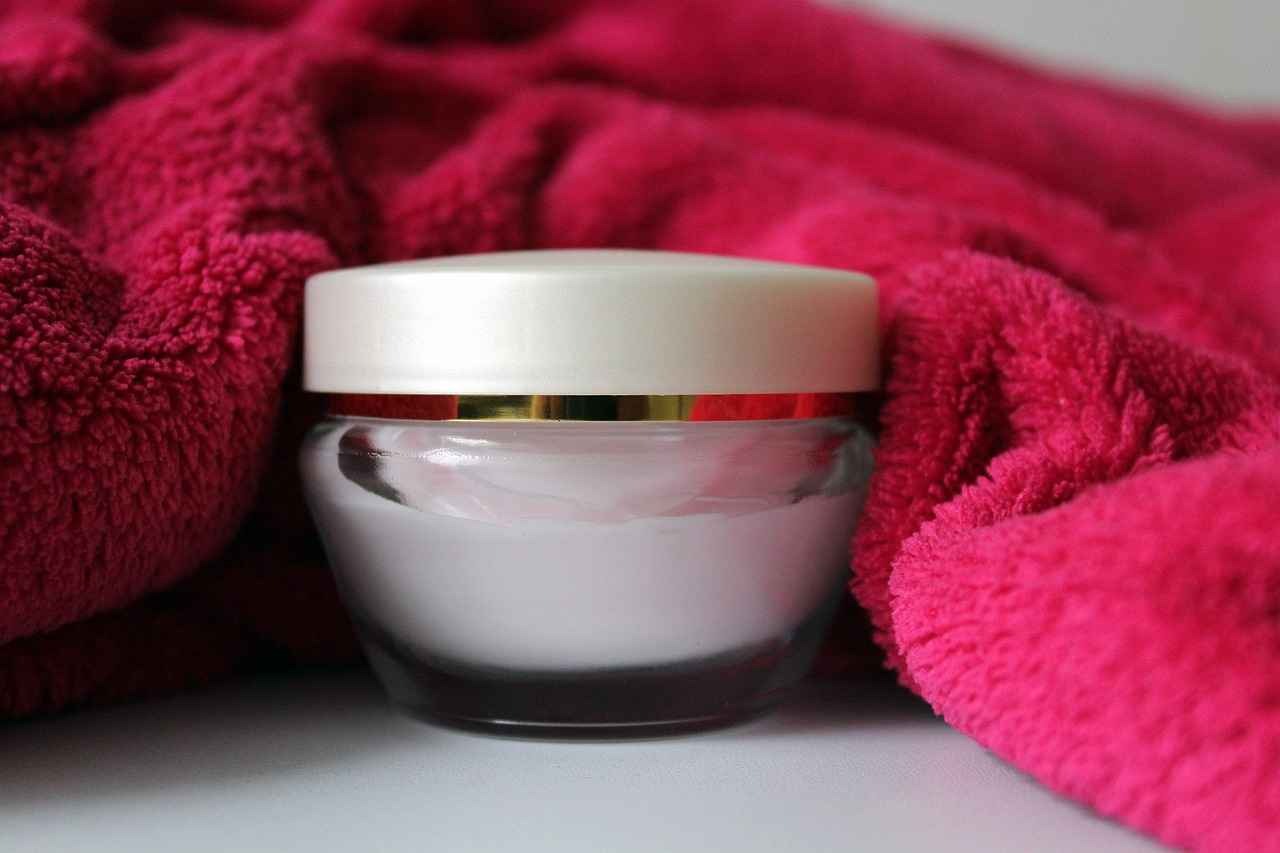Understanding the recovery timeline after deep cleaning dental procedures is crucial for ensuring optimal oral health. This article delves into the gum reattachment process, explores the factors influencing healing, and offers valuable tips for a smooth recovery.
Deep cleaning, or scaling and root planing, is a vital dental procedure designed to eliminate plaque and tartar that accumulate below the gum line. This buildup can lead to gum disease if left untreated. By removing these deposits, deep cleaning helps to restore gum health and prevent further complications.
The recovery timeline after a deep cleaning varies significantly among individuals. Generally, patients can expect the healing process to take anywhere from a few days to several weeks. Factors such as overall health, the severity of gum disease, and individual healing capabilities play a critical role in determining recovery duration.
- Extent of Cleaning: More extensive cleaning may require a longer recovery period.
- Individual Health Conditions: Pre-existing health issues, such as diabetes, can slow healing.
- Post-Treatment Care: Adhering to your dentist’s aftercare instructions can significantly affect healing time.
Maintaining proper oral hygiene after deep cleaning is essential for promoting healing. Regular brushing and flossing, along with using any prescribed mouth rinses, can help prevent complications like infections or prolonged discomfort.
Indeed, lifestyle choices can significantly impact the recovery process. For instance, smoking can hinder blood flow and delay healing. Additionally, a balanced diet rich in vitamins and minerals supports gum health, making it crucial to avoid tobacco and consume nutrient-dense foods during recovery.
During the recovery period, it is common for patients to experience some discomfort, swelling, or mild bleeding. Understanding these symptoms can help manage expectations and ensure that you seek timely care if complications arise.
To facilitate quicker gum reattachment, consider implementing the following strategies:
- Follow your dentist’s post-treatment advice closely.
- Utilize any prescribed mouth rinses to reduce bacteria.
- Attend all recommended follow-up appointments to monitor healing progress.
Eating soft, nutritious foods can aid in recovery. Foods rich in vitamin C, vitamin D, and calcium are particularly beneficial for supporting gum health. Consider incorporating items like yogurt, leafy greens, and citrus fruits into your diet.
If you experience excessive pain, prolonged bleeding, or any signs of infection, it is crucial to contact your dentist immediately. Early intervention can prevent complications and ensure a smoother recovery process.

What is Deep Cleaning and Why is it Necessary?
Deep cleaning, often referred to as scaling and root planing, is a crucial dental procedure designed to combat the effects of gum disease. This thorough cleaning process targets the removal of plaque and tartar that accumulate below the gum line, which are significant contributors to periodontal disease if left untreated. Understanding the importance of this procedure is essential for maintaining optimal oral health.
The buildup of plaque, a sticky film of bacteria, can harden into tartar if not removed regularly through proper oral hygiene practices. Once tartar forms, it can only be removed by a dental professional. If tartar is allowed to persist, it can lead to inflammation of the gums, known as gingivitis, which can progress to more severe forms of gum disease, including periodontitis. This is why deep cleaning is not just a cosmetic treatment; it is a necessary intervention to preserve both gum and overall dental health.
During a deep cleaning session, the dentist or dental hygienist will use specialized tools to carefully scale the teeth and roots, removing plaque and tartar deposits. This process not only helps in preventing gum disease but also promotes healing of the gums by smoothing the tooth roots. A smoother surface is less likely to harbor bacteria, thus facilitating better gum reattachment.
Many patients may wonder if deep cleaning is painful. While some discomfort is normal, particularly if gum disease is present, local anesthesia is often used to minimize any pain during the procedure. Post-treatment, patients might experience some sensitivity and swelling, but these symptoms typically subside as the gums heal.
In addition to preventing gum disease, deep cleaning can also contribute to improved oral hygiene by making it easier for patients to maintain clean teeth and healthy gums. Regular dental check-ups and cleanings, including deep cleaning when necessary, are vital for preventing serious dental issues.
- Prevention of Gum Disease: Deep cleaning is essential to halt the progression of gum disease.
- Improved Oral Hygiene: Smoother tooth surfaces make it easier to maintain oral health.
- Reduction of Bad Breath: Removing bacteria can help eliminate persistent bad breath.
- Enhanced Overall Health: Healthy gums are linked to better overall health, reducing risks for conditions such as heart disease.
In conclusion, deep cleaning is a vital dental procedure that plays a significant role in preventing gum disease and promoting long-term oral health. Understanding its importance can empower patients to take proactive steps in their dental care routine. Regular visits to the dentist for evaluations and cleanings can help maintain healthy gums and teeth.

How Long Does the Recovery Process Take?
Understanding the recovery process after a deep cleaning dental procedure is crucial for patients aiming for optimal gum health. The timeline for recovery can vary significantly among individuals, generally ranging from a few days to several weeks. This variability is largely dependent on several factors, including overall health, the severity of gum disease, and the effectiveness of post-treatment care.
The duration of recovery after deep cleaning is influenced by a variety of factors:
- Severity of Gum Disease: Individuals with advanced gum disease may experience a longer recovery period compared to those with milder conditions.
- Overall Health: Patients with pre-existing health issues, such as diabetes or autoimmune disorders, may find their healing process prolonged.
- Post-Treatment Care: Adhering to your dentist’s aftercare instructions can significantly impact the speed of recovery.
After deep cleaning, the gums undergo a natural healing process where they begin to reattach to the teeth. This process can be uncomfortable and may involve some swelling or bleeding, particularly in the first few days. Typically, you can expect:
- Initial Healing: The first few days post-treatment may involve mild discomfort and sensitivity.
- Gradual Improvement: As the days progress, symptoms should gradually lessen, indicating that the gums are healing.
- Full Recovery: Complete gum reattachment can take several weeks, especially if the initial gum condition was severe.
During the recovery period, it is common to experience:
- Discomfort: Some level of pain is normal but should be manageable with over-the-counter pain relievers.
- Swelling: Mild swelling around the gum area can occur; applying a cold compress may help alleviate this.
- Bleeding: Light bleeding may happen, particularly when brushing; however, if bleeding persists, consult your dentist.
Maintaining proper oral hygiene is essential during recovery. Here are some tips:
- Gentle Brushing: Use a soft-bristled toothbrush and avoid aggressive brushing to prevent irritation.
- Antimicrobial Rinses: Your dentist may recommend mouth rinses to help reduce bacteria and promote healing.
- Regular Check-Ups: Attending follow-up appointments can ensure that the healing process is on track.
Indeed, lifestyle choices play a significant role in the recovery process. Consider the following:
- Avoiding Tobacco: Smoking can hinder blood flow and delay healing; quitting can significantly improve recovery outcomes.
- Nutrition: A balanced diet rich in vitamins and minerals supports gum health. Foods high in vitamin C and calcium are particularly beneficial.
If you experience excessive pain, prolonged bleeding, or any signs of infection, it is essential to contact your dentist immediately. Early intervention can prevent complications and facilitate a smoother recovery.
In summary, while the recovery timeline after deep cleaning can vary, understanding the factors that influence healing and adhering to proper care guidelines can help ensure a successful recovery. By taking proactive steps and maintaining communication with your dental care provider, you can support your gums in reattaching effectively and efficiently.
What Factors Influence Gum Healing Time?
Understanding the recovery process after a deep cleaning is essential for anyone undergoing this dental procedure. One key aspect of recovery is the time it takes for gums to reattach. This process can vary significantly based on several factors. In this section, we will explore these factors in detail, providing insights into how they influence the healing timeline.
The thoroughness of the deep cleaning plays a crucial role in how quickly gums can reattach. If the cleaning was extensive, involving significant removal of tartar and plaque, the gums may take longer to heal. This is because deeper cleaning can cause more inflammation and trauma to the gum tissue, requiring additional time for recovery.
Each person’s unique health profile can significantly affect the healing process. Underlying health issues, such as diabetes or autoimmune disorders, can impede recovery. For instance, individuals with diabetes may experience slower healing due to impaired blood flow and a weakened immune response. It is essential for patients to disclose their full medical history to their dentist, as this information can help tailor post-treatment care.
Following the dentist’s post-treatment care recommendations is vital for optimal recovery. Patients are typically advised to:
- Use prescribed mouth rinses to reduce bacteria.
- Avoid certain foods that could irritate the gums.
- Attend follow-up appointments for professional assessment.
Neglecting these guidelines can lead to complications, prolonging the healing time and potentially leading to further dental issues.
Maintaining excellent oral hygiene is crucial during the recovery period. Patients should brush gently and floss carefully to avoid disturbing the healing tissues. Regular cleaning helps prevent infections that could delay gum reattachment. Using a soft-bristled toothbrush and non-abrasive toothpaste can make a significant difference in comfort and healing.
Personal habits can also influence recovery time. For example, smoking is known to hinder blood flow and slow healing, while a diet rich in vitamins and minerals can promote faster recovery. Eating foods high in vitamin C, such as oranges and strawberries, can enhance gum health, while calcium-rich foods like dairy products support overall oral health.
Age can also be a factor in how quickly gums heal. Generally, younger individuals tend to heal faster than older adults. Additionally, hormonal changes, particularly in women during pregnancy or menopause, can affect gum health and recovery. Understanding these factors can help set realistic expectations for the healing process.
During the recovery phase, it’s essential to monitor for any signs of complications. Symptoms such as excessive swelling, prolonged bleeding, or increased pain may indicate that something is amiss. If these symptoms occur, contacting your dentist promptly can help address any issues and facilitate a smoother recovery.
In summary, the time it takes for gums to reattach after deep cleaning is influenced by a variety of factors, including the extent of the cleaning, individual health conditions, adherence to care guidelines, and lifestyle choices. By understanding these elements, patients can take proactive steps to support their recovery and promote optimal gum health.
How Does Oral Hygiene Impact Recovery?
Maintaining proper oral hygiene post-procedure is crucial for promoting healing and preventing complications, such as infections or prolonged discomfort. After undergoing a deep cleaning, the mouth can be more susceptible to bacteria and irritants. Therefore, following a strict oral care regimen is essential.
First and foremost, it is important to brush your teeth gently at least twice a day using a soft-bristled toothbrush. This helps to remove any food particles and plaque that could aggravate sensitive gums. Additionally, using a fluoride toothpaste can aid in strengthening the enamel and providing extra protection against cavities.
Incorporating antimicrobial mouthwash into your routine can also be beneficial. This type of mouthwash helps to reduce bacteria in the mouth, which can prevent infections and promote healing. Be sure to follow your dentist’s recommendations regarding the use of mouthwash, as some options may be more suitable than others based on your specific needs.
Moreover, it is advisable to avoid certain foods that can irritate the gums during the recovery period. Foods that are hard, crunchy, or spicy should be limited, as they can cause discomfort and hinder the healing process. Instead, opt for soft foods that are easy to chew and digest, such as yogurt, mashed potatoes, and smoothies.
Staying hydrated is another important aspect of oral hygiene. Drinking plenty of water helps to maintain moisture in the mouth, which is essential for healing. Additionally, it can help wash away food particles and bacteria, further reducing the risk of complications.
Regular dental check-ups are vital during the recovery process. These appointments allow your dentist to monitor your healing progress and address any concerns that may arise. If you notice any signs of infection, such as increased swelling, pus, or persistent pain, it is crucial to contact your dentist immediately.
Lastly, be mindful of your lifestyle choices. Smoking and tobacco use can significantly delay the healing process and increase the risk of complications. Quitting smoking, if applicable, can greatly enhance your recovery and overall oral health.
In summary, maintaining proper oral hygiene after a deep cleaning is essential for a smooth recovery. By following these guidelines and being proactive about your oral care, you can promote healing, minimize discomfort, and reduce the risk of complications.
Can Lifestyle Choices Affect Gum Recovery?
Lifestyle choices play a crucial role in the recovery process following deep cleaning dental procedures. Understanding how certain habits can affect gum healing is essential for achieving optimal results. In this section, we will explore various lifestyle factors that can influence gum recovery, emphasizing the importance of making informed choices.
Smoking is one of the most detrimental habits for oral health. It not only contributes to the development of gum disease but also significantly delays the healing process after deep cleaning. The chemicals in tobacco can impair blood flow to the gums, reducing the supply of essential nutrients and oxygen needed for recovery. Furthermore, smoking can lead to increased inflammation and a higher risk of infection, making it crucial for patients to avoid tobacco products during their recovery period.
A well-balanced diet rich in vitamins and minerals is vital for promoting gum health. Foods that are high in vitamin C, such as citrus fruits and leafy greens, can enhance collagen production, which is essential for gum tissue repair. Additionally, calcium and vitamin D are important for maintaining the strength of the jawbone and supporting overall oral health. Incorporating a variety of nutrient-dense foods can help speed up the recovery process and improve healing outcomes.
During the recovery phase, it is advisable to avoid certain foods that can irritate the gums or hinder the healing process. Spicy and acidic foods can cause discomfort and increase inflammation. Additionally, sugary snacks can promote the growth of harmful bacteria in the mouth, leading to complications. Opting for soft, non-irritating foods can help ensure a smoother recovery journey.
Staying well-hydrated is another critical aspect of supporting gum recovery. Adequate hydration helps maintain saliva production, which plays a vital role in neutralizing acids and washing away food particles and bacteria. Drinking plenty of water can aid in the healing process and prevent dry mouth, a condition that can exacerbate gum issues.
Stress is often overlooked as a factor that can affect gum health. High stress levels can lead to increased inflammation and hinder the body’s ability to heal. Engaging in stress-reducing activities, such as yoga or meditation, can benefit overall health and promote a more efficient recovery process.
Maintaining proper oral hygiene is crucial for promoting healing after deep cleaning. Patients should follow their dentist’s recommendations for brushing and flossing, as well as using any prescribed mouth rinses. Good oral hygiene helps prevent infection and complications, ensuring that the gums can reattach effectively.
In conclusion, lifestyle choices such as smoking, diet, hydration, and stress management significantly impact the recovery process after deep cleaning. By making conscious decisions to avoid harmful habits and embrace healthy practices, patients can enhance their healing outcomes and support their overall oral health.
What Symptoms Should You Expect During Recovery?
After undergoing a deep cleaning dental procedure, it is common for patients to experience a range of symptoms during the recovery phase. Understanding these symptoms is crucial for managing expectations and ensuring timely care. This section will delve into the typical symptoms you might encounter and provide insights on how to cope with them effectively.
- Discomfort: It is normal to feel some level of discomfort following the procedure. This may range from mild sensitivity to more pronounced pain in the gums. Over-the-counter pain relievers can help alleviate this discomfort.
- Swelling: Swelling is a typical response as your body begins to heal. This can occur in the gums and surrounding tissues. Applying a cold compress to the outside of your cheek can reduce swelling.
- Bleeding: Some bleeding is expected, especially in areas where the gums were treated. If bleeding persists or worsens, it is essential to contact your dentist.
- Changes in Taste: Some patients report a temporary change in taste sensation after deep cleaning, which usually resolves as the gums heal.
- Bad Breath: A common issue during recovery, bad breath can occur due to the healing process and the presence of bacteria. Maintaining good oral hygiene is essential to mitigate this.
Recognizing and understanding these symptoms is vital for several reasons:
- Managing Expectations: Knowing what to expect can help patients feel more comfortable and less anxious during the recovery process.
- Seeking Timely Care: Understanding which symptoms are normal and which may indicate complications can help patients know when to reach out to their dentist.
- Improving Recovery: Being aware of potential discomfort allows patients to take proactive steps in their recovery, such as adjusting their diet or using recommended oral care products.
If you experience any of the following symptoms, it is crucial to reach out to your dentist:
- Excessive Pain: If the pain becomes unbearable despite taking pain relief medication, this may indicate a problem.
- Prolonged Bleeding: While some bleeding is normal, prolonged or excessive bleeding should be evaluated by a professional.
- Signs of Infection: Symptoms like fever, increased swelling, or pus should be addressed immediately.
In summary, while some discomfort, swelling, and bleeding are common after a deep cleaning procedure, understanding these symptoms can significantly enhance your recovery experience. By staying informed and proactive, you can ensure a smoother healing process and maintain optimal oral health.

What Can You Do to Promote Faster Healing?
Recovering from deep cleaning is a crucial phase in maintaining your oral health. Implementing specific care strategies can significantly enhance the healing process, facilitating quicker gum reattachment. By adhering to your dentist’s advice, utilizing prescribed mouth rinses, and ensuring regular follow-up appointments, you can optimize your recovery experience.
One of the most effective ways to promote faster healing is to follow your dentist’s recommendations meticulously. After a deep cleaning, your dentist may suggest specific oral care routines tailored to your needs. This could include advice on brushing techniques, types of toothpaste, and the frequency of flossing. Ignoring these instructions can hinder your recovery and lead to complications.
Mouth rinses play a vital role in the healing process. Your dentist may prescribe an antibacterial mouthwash to help reduce inflammation and prevent infection. Regular use of these rinses can promote gum health and accelerate the reattachment of your gums to the teeth. Make sure to follow the directions provided, as improper use may diminish their effectiveness.
Follow-up appointments are essential for monitoring your recovery progress. During these visits, your dentist can assess the healing of your gums and make necessary adjustments to your care plan. Regular check-ups allow for early detection of any potential issues, ensuring that your recovery remains on track.
Post-treatment oral hygiene is crucial. Brush your teeth gently with a soft-bristled toothbrush and avoid aggressive flossing, which can irritate sensitive gums. Keeping your mouth clean helps to prevent plaque buildup and reduces the risk of infection, which can delay healing.
Staying hydrated is important for overall health and can aid in the healing process. Additionally, consuming a balanced diet rich in vitamins and minerals can support gum recovery. Foods high in vitamin C, such as oranges and strawberries, are particularly beneficial for gum health. Incorporating dairy products can provide calcium, essential for strong teeth and healthy gums.
Smoking and excessive alcohol consumption can severely impair your body’s healing capabilities. Both substances can lead to increased inflammation and hinder gum reattachment. Quitting smoking and limiting alcohol intake can significantly enhance your recovery outcomes.
Stress can negatively impact your immune system, making it harder for your body to recover. Engaging in stress-reducing activities, such as yoga, meditation, or regular exercise, can improve your overall health and support the healing of your gums.
During your recovery, it’s important to be aware of any symptoms you may experience. Mild discomfort and swelling are common, but if you notice excessive pain, prolonged bleeding, or signs of infection, such as pus or fever, contact your dentist immediately. Early intervention can prevent complications and ensure a smoother recovery.
By implementing these strategies, you can significantly enhance your recovery process after deep cleaning. Remember that your commitment to following these guidelines will not only help in quicker gum reattachment but also contribute to your long-term oral health.
Are There Recommended Foods for Recovery?
After undergoing a deep cleaning dental procedure, the recovery process is crucial for ensuring optimal gum health and overall oral well-being. One significant aspect of recovery is nutrition. Eating soft, nutritious foods not only makes the recovery more comfortable but also plays a vital role in supporting gum health.
During the healing phase, your body requires additional nutrients to repair tissues and promote healing. Soft foods are easier to chew and less likely to irritate sensitive gums. Incorporating a variety of nutrient-rich foods can significantly enhance the recovery process.
Vitamin C is essential for collagen synthesis, which is critical for gum healing. Foods such as:
- Oranges and other citrus fruits
- Strawberries
- Bell peppers
- Broccoli
are excellent sources of vitamin C. Additionally, vitamin D aids in calcium absorption, which is vital for maintaining strong bones and gums. Foods rich in vitamin D include:
- Fatty fish like salmon and mackerel
- Egg yolks
- Fortified dairy products
Calcium is another critical nutrient for gum healing. It helps maintain the strength of your teeth and jawbone. Incorporating calcium-rich foods can be beneficial. Consider adding:
- Dairy products such as yogurt and cheese
- Leafy greens like kale and spinach
- Almonds and other nuts
Staying hydrated is equally important during recovery. Drinking plenty of water helps keep your mouth moist and supports overall healing. In addition to water, consider:
- Soups and broths
- Smoothies made with soft fruits and yogurt
- Pureed vegetables for added nutrients
While focusing on beneficial foods, it’s equally important to avoid certain items that can hinder the healing process. Stay away from:
- Hard or crunchy foods that can irritate gums
- Spicy foods that may cause discomfort
- Sugary snacks that can promote plaque buildup
In summary, eating soft, nutritious foods rich in vitamins C and D, as well as calcium, is essential for supporting gum health and healing after a deep cleaning procedure. By making informed dietary choices, you can enhance your recovery experience and promote long-term oral health. Always consult with your dentist or healthcare provider for personalized recommendations tailored to your specific needs.
When Should You Contact Your Dentist?
After undergoing a deep cleaning procedure, it’s normal to experience some discomfort and changes in your gums. However, it’s crucial to monitor your symptoms closely to ensure a smooth recovery. In this section, we will discuss when it is necessary to reach out to your dentist for further evaluation.
During the recovery phase, various symptoms may arise. While some discomfort is typical, certain signs should prompt you to contact your dentist:
- Excessive Pain: If you find that your pain is not manageable with over-the-counter medication or worsens over time, it is essential to seek professional advice.
- Prolonged Bleeding: Light bleeding can occur after deep cleaning; however, if bleeding persists for more than a few days, it may indicate an underlying issue.
- Signs of Infection: Symptoms such as fever, increased swelling, or pus around the gums should be addressed immediately, as they may signal an infection that requires treatment.
Ignoring troubling symptoms can lead to more significant dental issues down the line. For instance, untreated infections can spread and result in abscesses, which may require more invasive procedures. Additionally, prolonged bleeding can lead to complications that hinder the healing process.
Your dentist will likely schedule follow-up appointments to monitor your recovery. During these visits, they will:
- Assess the healing of your gums and ensure they are reattaching properly.
- Provide guidance on managing any discomfort and improving your oral hygiene routine.
- Address any concerns you may have regarding your recovery process.
To make the most of your appointment, consider the following:
- Keep a Symptom Diary: Document any pain levels, bleeding, or other symptoms you experience to provide your dentist with detailed information.
- List Your Medications: Inform your dentist about any medications or supplements you are taking, as they may affect your recovery.
- Prepare Questions: Write down any questions or concerns you wish to discuss, ensuring you don’t forget anything during the appointment.
If you experience severe symptoms such as intense pain or significant swelling, consider seeking immediate dental care. Many dental offices have emergency protocols in place to address urgent issues.
In summary, while some discomfort is expected post-deep cleaning, paying attention to your body and being proactive about any concerning symptoms is vital. Timely communication with your dentist can lead to better outcomes and a smoother recovery process.
Frequently Asked Questions
- How soon can I expect my gums to reattach after a deep cleaning?
The timeline for gum reattachment varies, but generally, you can expect some progress within a few days. Full healing might take several weeks, depending on individual health and the extent of the procedure.
- What can I do to ease discomfort during recovery?
To ease discomfort, consider using over-the-counter pain relievers as recommended by your dentist. Additionally, rinsing your mouth with warm salt water can help soothe inflammation and promote healing.
- Are there specific foods I should avoid after deep cleaning?
Yes, it’s best to avoid hard, crunchy, or spicy foods that might irritate your gums. Stick to soft foods like yogurt, mashed potatoes, and smoothies to make your recovery smoother.
- How important is it to follow post-treatment care instructions?
Following post-treatment care instructions is crucial! It helps prevent complications and speeds up the healing process. Think of it like watering a plant; if you don’t care for it, it won’t thrive!
- When should I contact my dentist during recovery?
If you experience excessive pain, prolonged bleeding, or any signs of infection like swelling or pus, it’s important to reach out to your dentist immediately for guidance and possible treatment.




